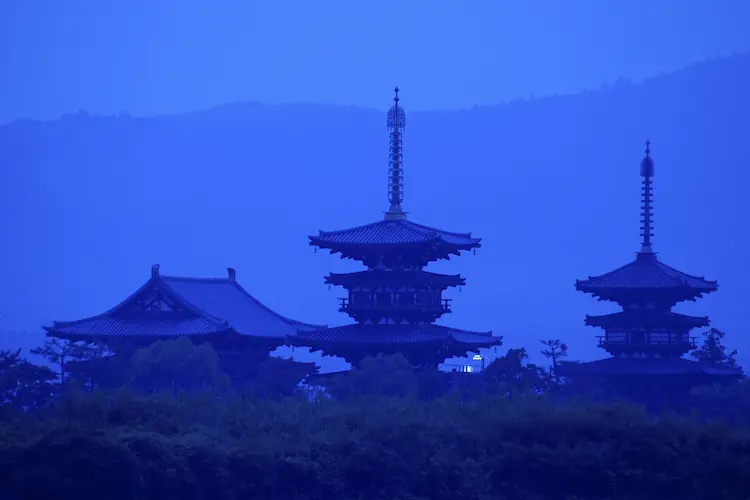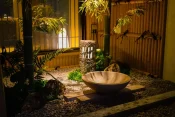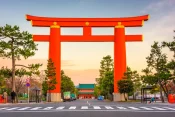Discover the Timeless Beauty of Yakushiji Temple: A Hidden Gem in Nara, Japan
Nara, the ancient capital of Japan, is known for its wealth of historical and cultural treasures. Among its many beautiful temples, Yakushiji Temple stands out as a symbol of both architectural splendor and spiritual depth. Founded over 1,300 years ago, this temple has been a center of Buddhist learning and devotion. This article will take you on a journey through the rich history and serene beauty of Yakushiji Temple, inspiring you to include this hidden gem in your travel itinerary.
The History and Significance of Yakushiji Temple
Yakushiji Temple was established in 680 AD by Emperor Tenmu, who built it to pray for the recovery of his beloved consort. The temple was originally located in Asuka, the then-capital of Japan, before being moved to Nara in 718 AD. It became a vital center for the study and spread of Buddhism during the Nara Period (710-794 AD), contributing significantly to the cultural and spiritual development of Japan. The temple’s historical significance is recognized globally, as it is part of the UNESCO World Heritage Sites that make up the “Historic Monuments of Ancient Nara.”
Architectural Marvels of Yakushiji
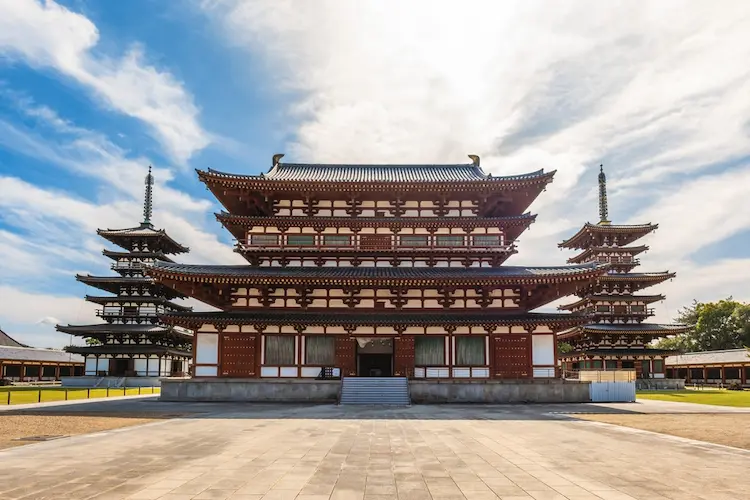
One of the most striking features of Yakushiji is its symmetrical layout, with twin pagodas—East Pagoda (To-to) and West Pagoda (Sai-to)—flanking the Main Hall (Kondo). The East Pagoda, which dates back to the 8th century, is the only original structure that survived numerous fires and disasters. Standing at 34 meters tall, this three-story pagoda is a masterpiece of ancient Japanese architecture, combining beauty and strength in its unique design.
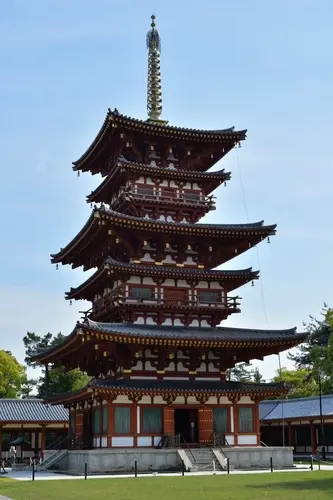
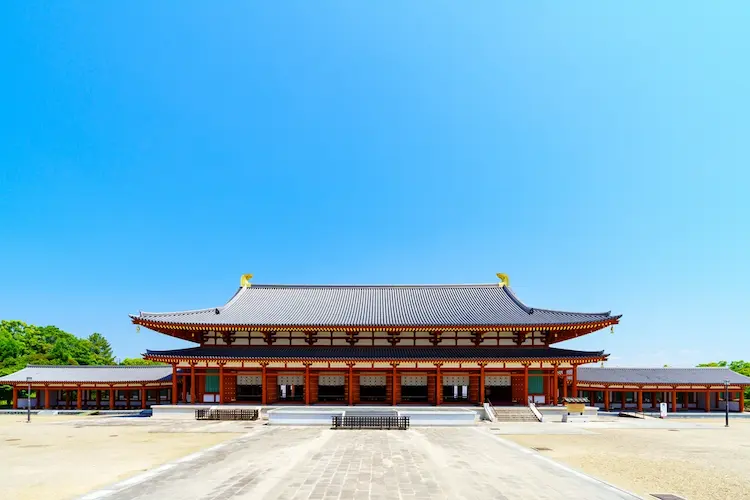
In contrast, the West Pagoda and the Main Hall have been meticulously reconstructed using traditional building techniques, demonstrating a deep respect for historical authenticity. The newly rebuilt Main Hall houses the Yakushi Triad, a stunning set of statues featuring Yakushi Nyorai, the Medicine Buddha, flanked by the Bodhisattvas Nikko and Gakko. These statues not only serve as objects of worship but also exemplify the refined artistic style of the Nara Period.
Art and Cultural Treasures of Yakushiji
Yakushiji is home to numerous national treasures, with its art collection offering a glimpse into the spiritual and cultural landscape of early Japan. The Yakushi Nyorai statue, a national treasure, is the focal point of the temple and represents the Buddha of Healing. This powerful figure is believed to possess the ability to heal both physical and spiritual ailments, attracting pilgrims seeking relief and blessings.
The temple’s museum showcases many of its historical artifacts, including ancient scriptures, ceremonial objects, and exquisite sculptures. These pieces, crafted with exceptional skill and devotion, reflect the deep religious fervor and artistic excellence of the time. Visiting the museum allows you to connect more deeply with the temple’s rich history and the enduring appeal of its spiritual and artistic heritage.
Visiting Yakushiji Temple
Getting to Yakushiji is convenient, whether you’re coming from Nara Station or nearby cities like Kyoto and Osaka. From Nara Station, it’s just a 10-minute train ride followed by a short walk to the temple grounds. The best times to visit are during the cherry blossom season in spring and the autumn foliage season, when the temple grounds are bathed in beautiful seasonal colors. For a truly magical experience, visit during the evening illuminations, when the temple’s elegant architecture is beautifully lit against the night sky.
Nearby, you can also visit Toshodaiji Temple, another UNESCO World Heritage Site, and the Nara National Museum, which houses an impressive collection of Buddhist art. These sites together provide a comprehensive view of Nara’s rich cultural and spiritual heritage.
Tips for a Meaningful Experience
To fully appreciate the historical and spiritual significance of Yakushiji, consider joining a guided tour. Expert guides can provide fascinating insights into the temple’s history, architecture, and art, enriching your understanding of the site. Take your time to wander through the temple grounds, allowing yourself to be enveloped by the tranquil atmosphere and the beauty of the surroundings.
When visiting sacred sites like Yakushiji, it’s important to observe proper etiquette. Remove your shoes before entering certain areas, refrain from loud conversations, and be respectful of the sanctity of the space. These small acts of respect can enhance your experience and deepen your connection to the temple’s spiritual essence.
Conclusion
Yakushiji Temple is more than just a historical landmark; it is a living testament to Japan’s spiritual and artistic heritage. Visiting this beautiful temple offers a rare opportunity to experience the grace and serenity of ancient Japan, surrounded by the echoes of its illustrious past. Whether you are a history enthusiast, an art lover, or simply seeking a peaceful retreat, Yakushiji Temple promises an unforgettable experience. Don’t miss the chance to include this hidden gem in your Nara travel plans.
